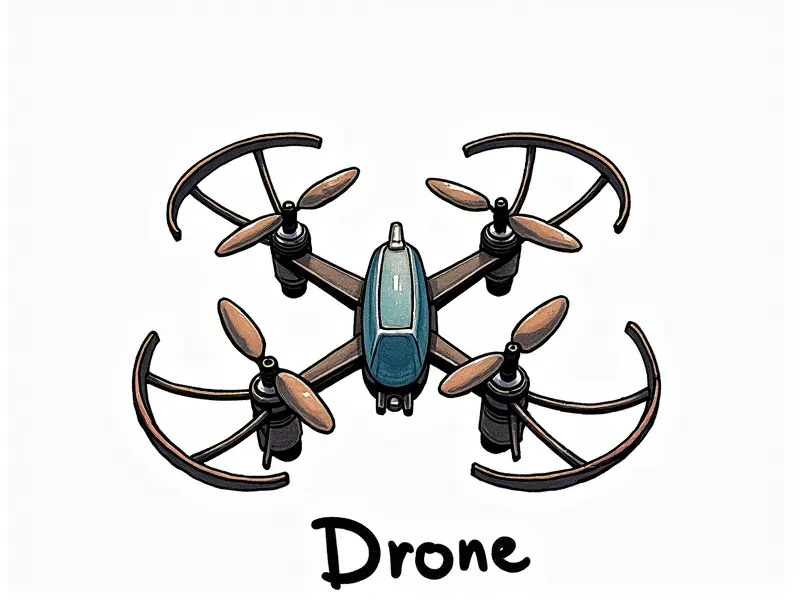What is a RC plane?

Beginner's Guide to RC Planes
Welcome to the exciting world of radio-controlled (RC) airplanes! Whether you're a hobbyist looking for a new challenge or an aviation enthusiast eager to explore model planes, this guide will provide you with all the essential information you need to get started. From understanding basic concepts and components to choosing the right type of RC plane, we'll cover everything you need to know.
Understanding RC Aircraft Basics
RC airplanes are miniature versions of real aircraft that can be controlled remotely using a transmitter (controller) and receiver. These planes range from simple gliders to complex multi-engine models capable of aerobatic maneuvers. They offer a unique blend of fun, skill-building, and technical challenge.
How Do RC Planes Work?
An RC plane operates on the principle of radio signals transmitted between the controller and the aircraft. The transmitter sends commands to the receiver installed in the plane, which then controls various servos (small motors) that manipulate control surfaces like ailerons, elevators, rudders, and throttle.
Types of RC Airplanes Explained
RC planes come in several types, each designed for different purposes:
- Gliders: These are non-powered aircraft that rely on thermal currents to stay aloft. They're ideal for beginners due to their simplicity and lower cost.
- Park Flyers: Small electric planes suitable for flying in parks or small open spaces, making them perfect for urban hobbyists.
- Sport Planes: Larger models designed for high-speed aerobatics and racing. They offer more power and maneuverability but require higher skill levels.
- Turbojets: High-performance planes powered by miniature jet engines, providing unmatched speed and realism.
RC Plane vs Drone: Key Differences
While both RC planes and drones are remote-controlled flying devices, they differ in several ways:
- Design: RC planes resemble traditional aircraft with wings, fuselage, and tail sections. Drones often have multi-rotor designs (quadcopters).
- Purpose: RC planes are primarily for recreational flying and aerobatics. Drones are used for photography, videography, surveillance, and delivery services.
- Control: RC planes use a traditional joystick controller. Drones often have more advanced control systems with GPS stabilization.
Best RC Planes for Beginners
If you're new to the hobby, consider starting with one of these beginner-friendly models:
- E-flite UMX Scout: A small electric glider that's easy to assemble and fly.
- Hobbico Sky Surfer: An affordable park flyer suitable for beginners looking to learn basic flight skills.
Flying RC Planes 101
Before you start flying, it's crucial to understand the basics of aerodynamics and control. Here are some key concepts:
- Lift: The upward force generated by airflow over the wings.
- Thrust: Propulsion provided by the engine or motor.
- Drag: Resistance encountered during flight, affecting speed and efficiency.
Essential Components of an RC Plane
To build a functional RC plane, you'll need these key components:
- Fuselage: The main body of the aircraft where all other parts are attached.
- Wings: Provide lift and control surfaces for maneuvering.
- Tail Section: Includes stabilizers, rudder, and elevators to maintain stability.
- Motor/Engine: Provides propulsion. Electric motors are common in modern RC planes due to their efficiency and ease of use.
- Battery Pack: Powers the motor or servos for electric models.
Top 5 Types of RC Planes
Here are five popular types of RC planes that cater to different interests:
- Scale Models: Highly detailed replicas of full-size aircraft, often used for display or competition.
- Freestyle Aerobatics: Designed for complex maneuvers and stunts. These planes require skilled pilots but offer immense satisfaction.
- Racing Planes: Built for speed with sleek designs optimized for aerodynamics. Popular in competitive settings.
- Biplanes: Classic aircraft featuring two sets of wings, often used in historical reenactments or as collectibles.
Introduction to RC Airplanes
The hobby of flying RC planes combines the thrill of aviation with the satisfaction of building and controlling your own aircraft. Whether you're a casual enthusiast or an aspiring pilot, there's something for everyone in this diverse field.
Getting Started with RC Flying
To begin your journey into RC flying:
- Join local clubs: Connect with experienced pilots who can offer guidance and support.
- Attend workshops: Learn from experts about safety, regulations, and best practices.
- Practice in safe environments: Start in open fields or designated flying sites to build confidence.
Flying RC planes is a rewarding hobby that combines creativity, technical skill, and the joy of flight. With this guide, you're well on your way to becoming an accomplished RC pilot!

